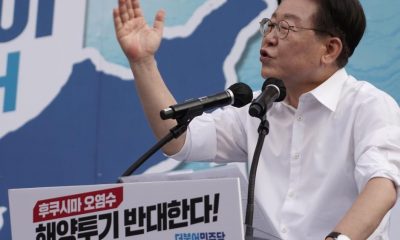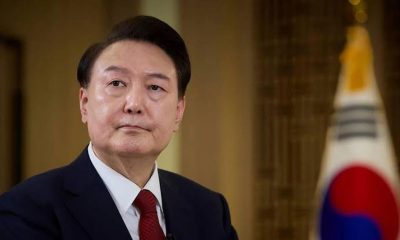ASIA
Technical and political messages of the “Hwasong-15” test
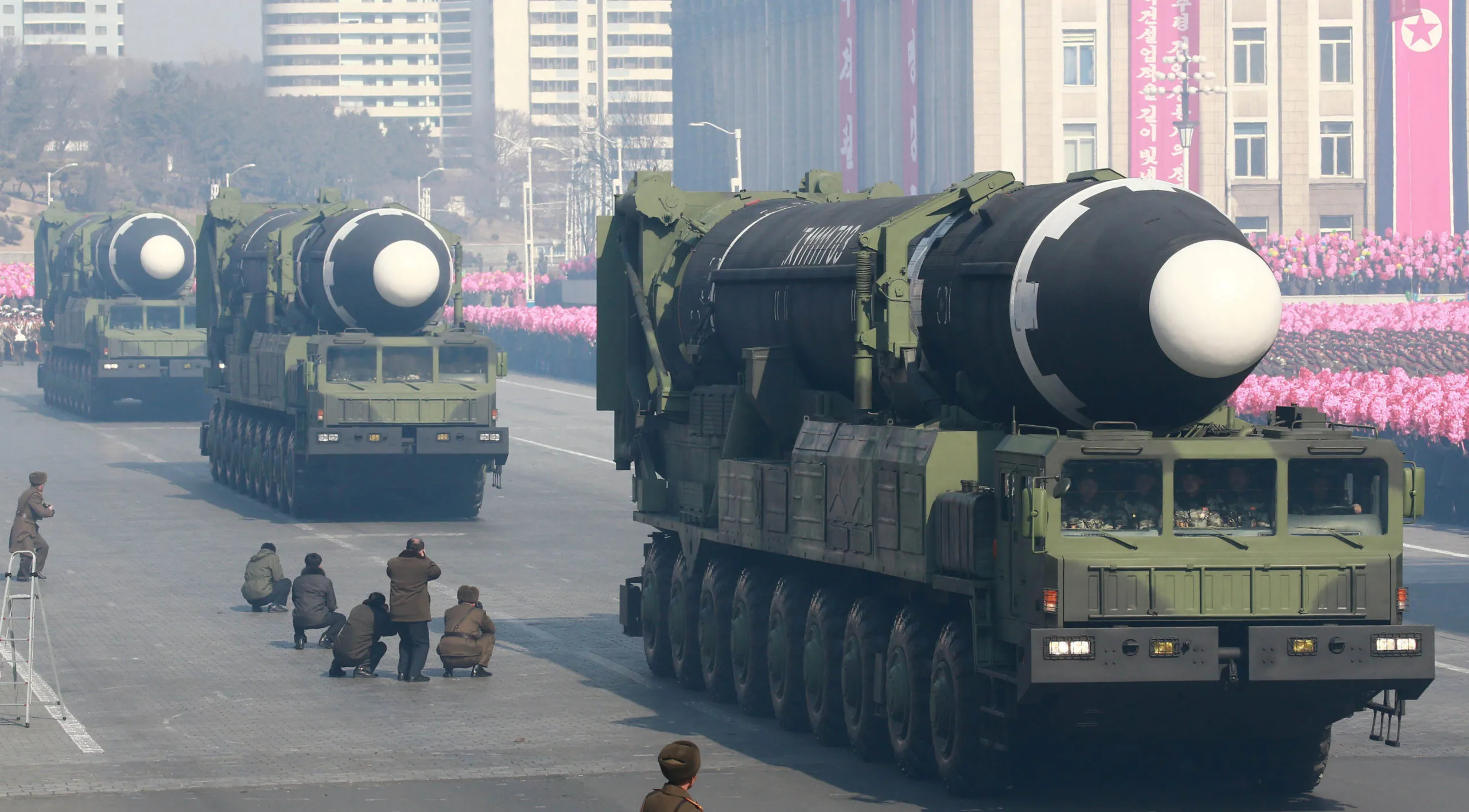
The Democratic People’s Republic of Korea (DPRK) conducted a Hwasong-15 intercontinental ballistic missile (ICBM) test on Saturday as a warning to the United States and South Korea and to test the readiness of special units under its newly formed Missile General Bureau.
“The military threats of the United States and South Korea are becoming too serious to be ignored,” the Korean Central News Agency (KCNA) reported on Sunday, noting that it has demonstrated its “efforts to turn its capacity of fatal nuclear counterattack on hostile forces.”
Kim Yo Jong, sister of the country’s leader Kim Jong Un, had warned Seoul and Washington of a “overwhelming counteraction” to “hostility” in a separate statement published by KCNA on Sunday. South Korean fighter jets flew alongside American F-16 fighter jets to escort South Korean warplanes and a B-1B bomber, the South Korean Joint Chiefs of Staff said on Sunday.
“The training aimed at demonstrating the timely and immediate deployment of the U.S. extended deterrence assets to the Korean Peninsula,” the statement said.
Following a joint flight report from South Korea, two short-range ballistic missiles fired from Sukchon areas in South Pyongan province of the DPRK into the East Sea at 06:59 and 07:04 am on February 20, 2023. It is reported that the artillery unit of the Korean People’s Army fired two shots from the 600-mm multiple rocket launcher during firing drills, and that they flew 395 km and 337 km, respectively.
Extended deterrence: Hwasong-15 (KN-22)
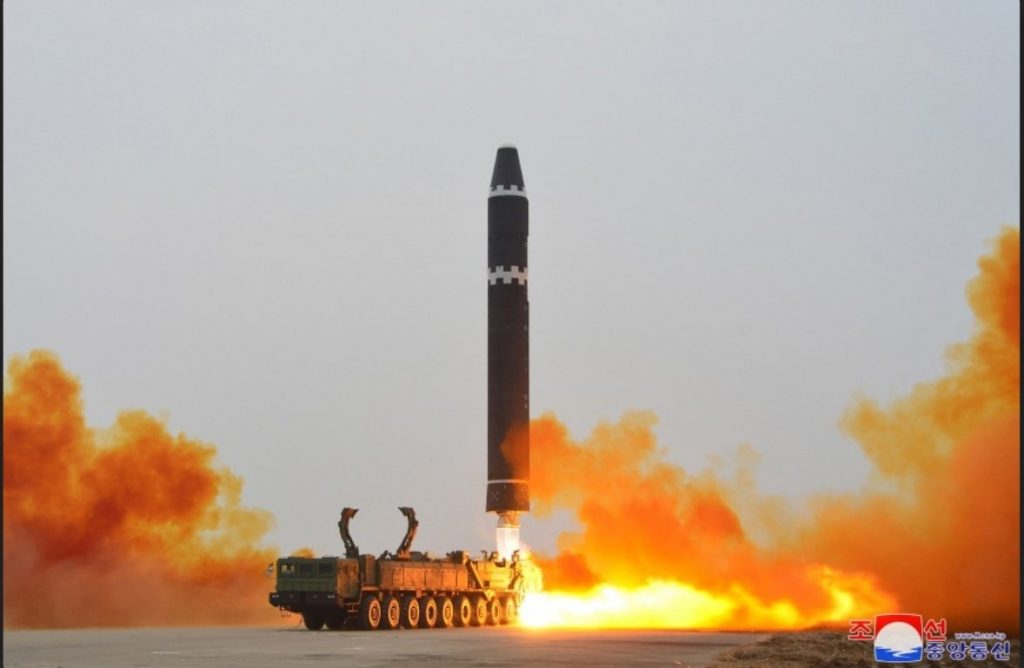
The missile, which was launched from Pyongyang International Airport on Saturday at 17.22 KST and hit a target in international waters 989 km away within the borders of the Sea of Japan, reportedly achieved maximum performance. The missile set a new record with a total of 66 minutes of flight at an altitude of about 5,768 km.
The DPRK began developing the Hwasong-15 sometime before 2017. The U.S. intelligence community had pointed out that it was aware of the development of the Hwasong-15 before its first test, and that the design was entirely in partnership with the Hwasong-14 and Hwasong-12 missile designs.

The HWASONG-15, which was first tested for the first time on November 28, 2017, was flying for 53 minutes to reach a maximum height of 4,500 km and 960 km.
The Hwasong-15 was first tested on November 28, 2017, from a site 30 km north of Pyongyang, revealing changes in the engine and launch values. In its first test, the missile flew for 53 minutes, reaching a maximum altitude of 4,500 km and a range of 960 km. Thus, it was reported that the missile could travel up to 10,000 km, enough to hold the continental United States at risk.
Technical development process and increased range
Although the missile appears to employ two of the Hwasong-14’s “Korean-style high-thrust” engines in its first stage, it is powered by Pektusan-B variant engines, an indigenously produced variant of the Soviet-designed RD-250 engine, each of which exerts 48 tons of thrust.
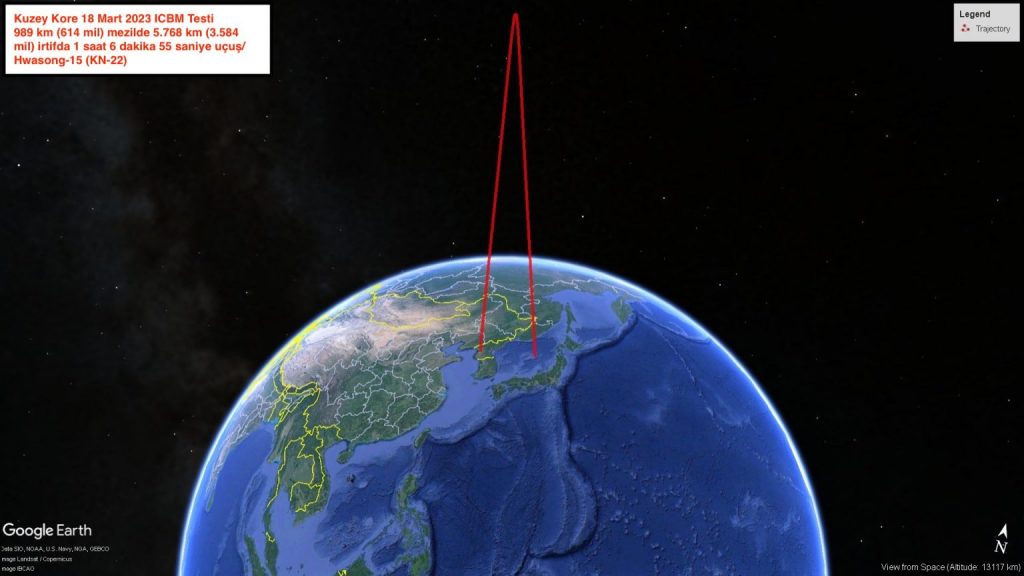
This increases the take-off thrust compared to the HS-14 only to 170% (788 kN SL) because the steering engines are missing. The function of the steering engines is provided through vectors on the main engine. The propulsion of the second stage, which will take place after 129 seconds, is completely unclear. The second stage is probably to be powered by a down-scaled Unha-3 variant engine. Considering these values, it points to a longer range than the first test, with engines and missile technology being developed day by day. Statements, flight values and technical information from Pyongyang include a range of 13,000 km.

Source: N.Brügge
On Saturday, Japanese Defense Minister Yasukazu Hamada said that “the missile was estimated to have a range of over 14,000 km, in this case, that would put the entire United States within its range,” confirming the progress of the DPRK missile development process.
Kim Yo-jong vows unprecedented strong responses
Speaking after the launch, U.S. Secretary of State Antony Blinken said that “the United States are prepared to engage with North Korea without any preconditions.”
Kim Yo-jong, sister of DPRK leader Kim Jong-un and chairman of the State Affairs Commission, made harsh statements.
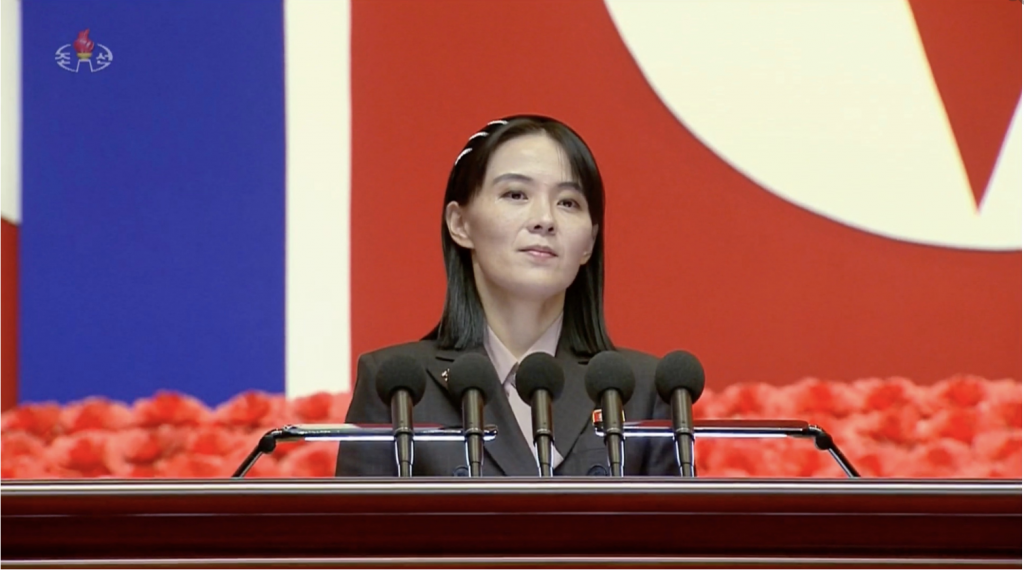
Kim Yo-jong – (DPRK) Deputy Department Director of the Publicity and Information Department of the Workers’ Party of Korea
Kim said they never trusted Washington’s repeated assurances that it did not have a hostile policy towards Pyongyang, adding: “I warn that we will watch every movement of the enemy and take corresponding and very powerful and overwhelming counteractions against every move hostile to us.”
Addressing their stance on South Korea, Kim reassured that “intercontinental missiles will not be aimed at Seoul,” adding that the DPRK leadership “still has no intention of engaging in dialogue.”
South Korean government wants to gain momentum on ‘nuclear weapons’
The South Korean ruling People Power Party (PPP) warned that if Pyongyang “continues its military provocations, South Korea will accelerate its acquisition of its own nuclear weapons.”
Party spokesman Chung Jin-suk said: “We have a clear option on North Korea’s nuclear weapons. We must first secure a concrete nuclear deterrence.”
ASIA
Xi urges global CEOs to safeguard trade and supply chains

Chinese President Xi Jinping, in a meeting with a group of executives including Rajesh Subramaniam from FedEx and Bill Winters from Standard Chartered, called on global business leaders to work together to protect supply chains.
Amid a deepening trade war with the US, the Chinese leader told the group of foreign business leaders, including Pascal Soriot from AstraZeneca and Miguel Ángel López Borrego from Thyssenkrupp, that they should resist behaviors that “turn back” history.
Speaking at the meeting held in Beijing on Friday, Xi said, “We hope everyone will have a broad and long-term perspective and not blindly follow actions that disrupt the security and stability of global industrial and supply chains, but instead add more positive energy and certainty to global development.”
The event at the Great Hall of the People marked the second consecutive year that Xi held a carefully arranged meeting with foreign CEOs in the Chinese capital. Last year’s event involved only US business leaders.
The meeting took place at the end of a busy week for Chinese policymakers, who are striving to strengthen relations with the international business community amid rising tensions with the administration of US President Donald Trump.
China’s leading annual CEO conference, the China Development Forum, was held earlier this week in Beijing, followed by the Boao Forum for Asia on the tropical resort island of Hainan.
Beijing is trying to present itself as a bastion of stability in global trade, in contrast to the US, where Trump has launched successive waves of tariffs on many products, from aluminum to automobiles.
Trump pledged on April 2 to impose broad and reciprocal taxes on US trade partners.
ASIA
Trump’s potential auto tariffs worry Japan and South Korea

Following US President Donald Trump’s announcement that he would impose a 25% tariff on imported cars and auto parts, Japan’s Prime Minister sounded the alarm on Thursday.
Prime Minister Shigeru Ishiba told lawmakers during a parliamentary session, “We need to consider appropriate responses,” adding, “All options will be on the table.”
This move, seen as undermining a bilateral agreement made between Trump and then-Prime Minister Shinzo Abe in September 2019, came as a surprise to Japan. This limited trade deal had opened Japan’s market to more American agricultural products. The agreement states that the two countries “will refrain from taking measures contrary to the spirit of these agreements.”
Japanese automakers reacted cautiously to the announcement. Toyota, Subaru, Mazda, and Honda issued brief statements saying they were assessing the potential impact.
Imported cars and trucks are currently subject to tariffs of 2.5% and 25%, respectively. When the new tariffs take effect on April 3, these rates will rise to 27.5% and 50%. The 25% tariff will also apply to automotive parts like engines and transmissions, taking effect no later than May 3.
Japan’s Chief Cabinet Secretary Yoshimasa Hayashi said the government intends to negotiate exemptions. Economists say it is unclear how exemptions might be secured, but there are several options.
According to economists, options Japan might consider include voluntary export restraints, a commitment to increase imports of items like natural gas, grain, and meat, and replacing Russian natural gas with gas from the US. In 2023, 8.9% of Japan’s natural gas imports came from Russia, while 7.2% came from the US.
“Japan will likely be looking at all these options,” said Koichi Fujishiro, a senior economist at the Dai-ichi Life Research Institute.
South Korea in a similar situation
South Korea is also expected to seek exemptions. Analysts said that South Korean automaker Hyundai Motor Group’s announcement earlier this week of a $21 billion US investment would help its negotiating position.
Esther Yim, a senior analyst at Samsung Securities, said, “The US has, in principle, applied a 25% tariff on all imported cars,” adding, “Washington can then negotiate with each country, and I think investment can be used as leverage.”
South Korea’s Ministry of Industry pledged an emergency response by April to help the country’s automakers, who are expected to face “significant challenges” when the tariffs take effect.
Over the years, global automakers have shifted to local production to avoid trade friction. According to the Mitsubishi Research Institute, 60% of Japanese cars sold in the US are produced in the US. This figure drops to 40% for Korean cars. For European brands, the rate is as high as 70%.
Although Ishiba insists all options are on the table, few analysts expect Japan to resort to retaliatory measures, at least at this point. “Japan would gain very little by retaliating against US tariffs,” Fujishiro said.
At a summit with Trump in February, Ishiba pointed out that Japan is the largest investor in the US and a significant job creator, promising to work towards increasing Japan’s investment balance from $783.3 billion in 2023 to $1 trillion.
Cars, Japan’s largest export item to the US, are worth 6 trillion yen ($40 billion) and will account for 28% of Japan’s total exports in 2024. This amount is equivalent to 1% of Japan’s nominal gross domestic product.
Takahide Kiuchi from the Nomura Research Institute estimates that a 25% tariff would reduce Japan’s car exports to the US by 15% to 20% and lower Japan’s GDP by 0.2%.
If Japanese automakers try to respond by shifting production to the US, this would reduce domestic employment and hollow out the country’s economy in the long run.
Masanori Katayama, chairman of the Japan Automobile Manufacturers Association, said at a press conference last week, “Car exports from Japan are necessary to supplement the domestic production of Japanese automakers and to provide a lineup of attractive cars… to meet the diverse needs of American customers through car dealerships in every US state.”
Katayama said that when the US implements the tariff, “a significant production adjustment is expected. The Japanese auto industry consists not only of automakers but also parts suppliers and employs 5.5 million people.”
Katayama insisted that the industry and the Japanese government must come together to take action and keep domestic supply chains intact.
The tariffs are also expected to harm American automakers because they too source parts and manufacture globally to keep costs down and make their cars competitive in the market.
Nomura analyst Anindya Das said General Motors could fall into an operating loss on an annual basis due to its reliance on factories in Mexico. He added that Toyota could also see a 30% drop in operating profit.
Jennifer Safavian, president and CEO of Autos Drive America, an industry group representing international automakers operating in the US, including Toyota, Honda, Nissan, and others, said, “Tariffs imposed today will make it more expensive to produce and sell cars in the US, ultimately leading to higher prices, fewer choices for consumers, and fewer manufacturing jobs in the US.”
ASIA
South Korean opposition leader Lee Jae-myung acquitted in election law case
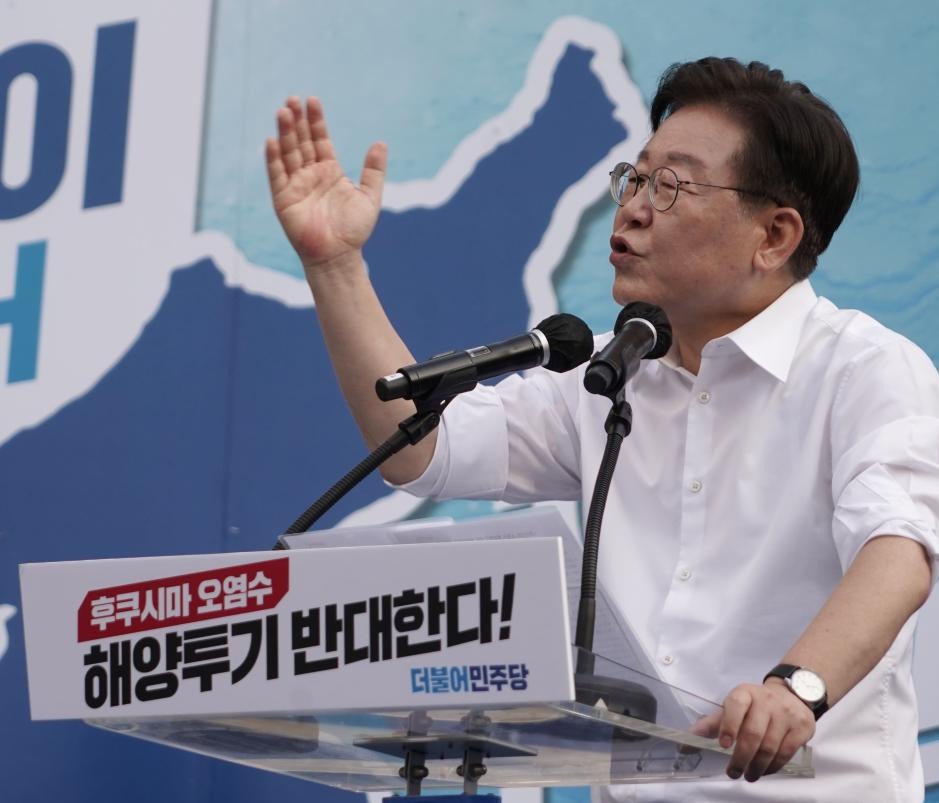
A court in South Korea on Wednesday overturned a lower court’s decision, ruling that the main opposition party leader is not guilty of violating election law. If this decision is upheld, it will pave the way for him to run in the next presidential election.
Prosecutors can appeal the decision, which could take the case to the Supreme Court, South Korea’s highest judicial body.
Speaking outside the court after the ruling was announced, Lee Jae-myung thanked the court for the decision, which he described as “the right decision.”
The charges against Lee stem from remarks he made in 2021 while competing in his party’s presidential primary, where he allegedly denied knowing one of the key figures in a real estate development scandal. The scandal involved a redevelopment project in Seongnam city, where Lee was mayor. Prosecutors allege Lee lied about his relationship with businessman Kim Moon-ki to conceal his own culpability in the real estate deal.
Immediately after the court’s decision was announced, Kweon Seong-dong, leader of the ruling People Power Party, called the ruling “regrettable” and urged the Supreme Court to quickly decide the case.
Lee, a trained lawyer and experienced politician, lost the 2022 presidential election by the narrowest margin in South Korea’s democratic history to now-impeached President Yoon Suk Yeol.
Yoon, Lee’s fierce rival, is awaiting a Constitutional Court ruling on his impeachment over charges of leading an insurrection in December. Lawmakers voted to impeach Yoon following his attempt to declare martial law in early December, which he claimed was necessary to protect South Korea from opposition “anti-state forces.” The measure was quickly rejected in the National Assembly, but the attempt triggered a political crisis that continues months later.
The Constitutional Court completed hearings on Yoon’s case late last month and is expected to deliver its verdict within days, although no official date has been announced. If the court finds Yoon not guilty, he will be immediately reinstated. If found guilty, an early election will be held within 60 days.
Data released last week by polling firm Gallup Korea showed Lee as the leading choice among potential candidates for the next presidential election. Lee, with a support rate of 36%, was far ahead of the number 2 likely candidate, conservative Labor Minister Kim Moon-soo.
Yoon’s impeachment delay: Legal rigour or political deadlock?
-
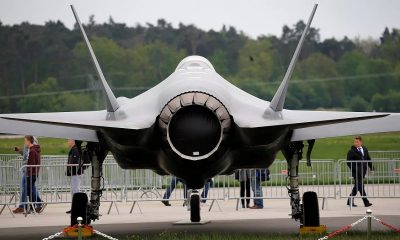
 EUROPE1 week ago
EUROPE1 week agoF-35 debate intensifies across Germany and Europe
-
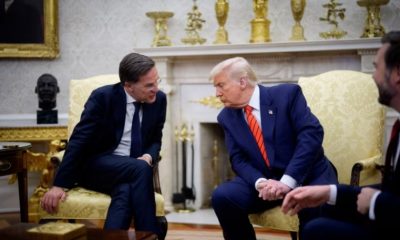
 EUROPE2 weeks ago
EUROPE2 weeks agoEurope plans for US absence in NATO with 5-10 year strategy
-
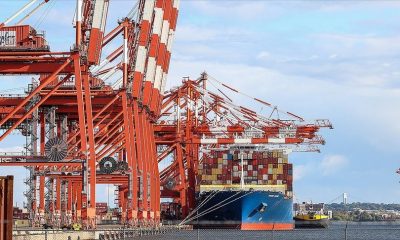
 DIPLOMACY1 week ago
DIPLOMACY1 week agoTrump’s proposed fees on Chinese ships threaten US maritime industry
-

 AMERICA2 weeks ago
AMERICA2 weeks agoTrump’s tariffs drive Nvidia to invest heavily in US manufacturing
-
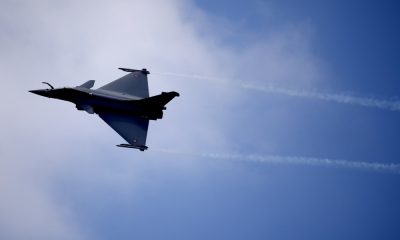
 EUROPE2 weeks ago
EUROPE2 weeks agoFrench defense industry gears up for war amid EU strategic autonomy push
-
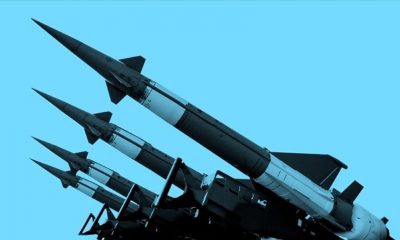
 EUROPE1 week ago
EUROPE1 week agoCalls for German nuclear armament grow louder
-

 ASIA1 week ago
ASIA1 week agoBeijing’s energy rules threaten Nvidia H20 chip sales in China
-

 DIPLOMACY2 weeks ago
DIPLOMACY2 weeks agoUS, Britain, and Türkiye excluded from EU armament fund


